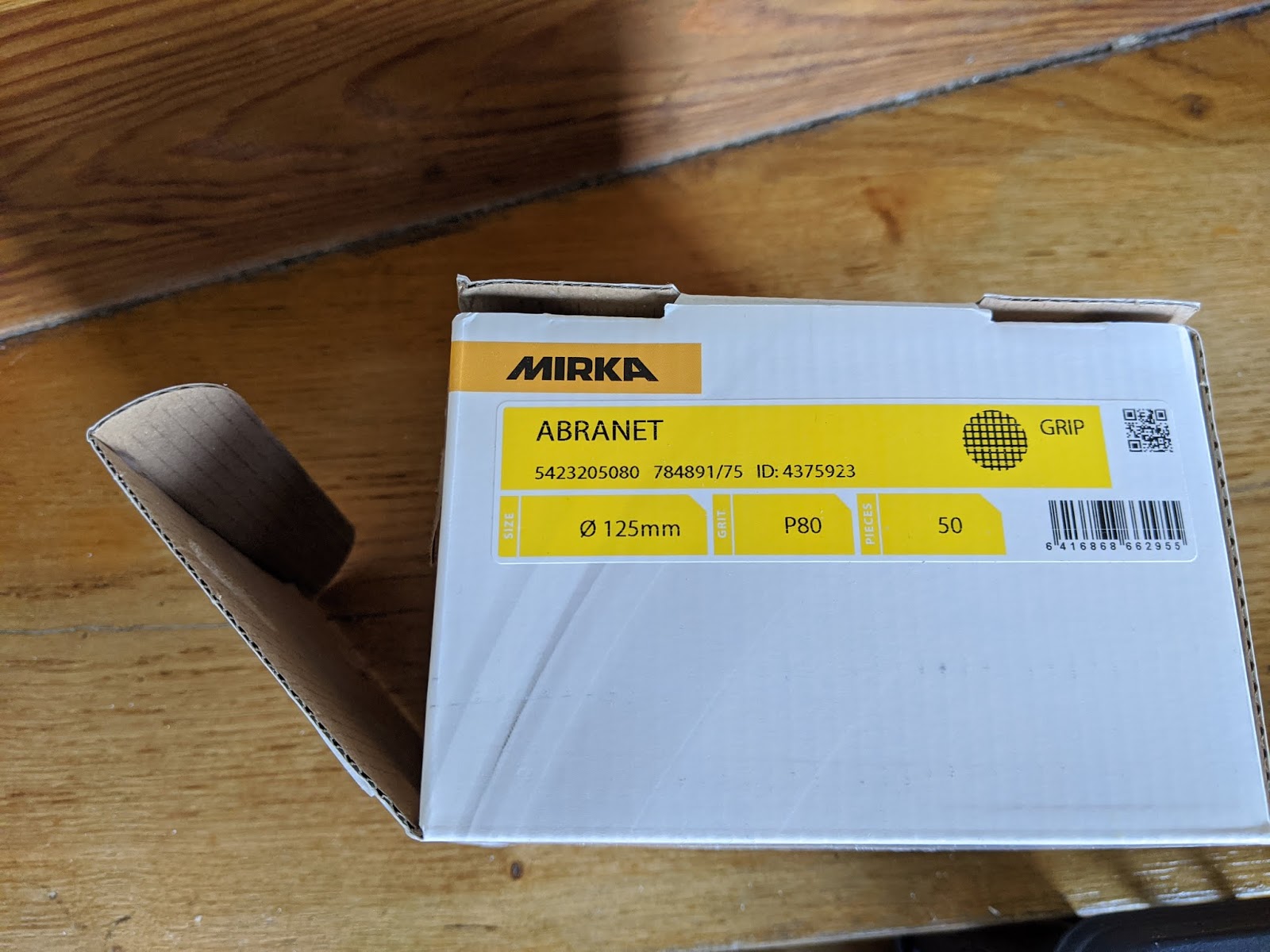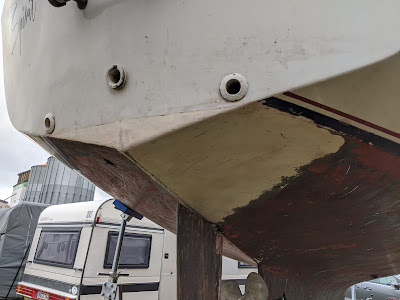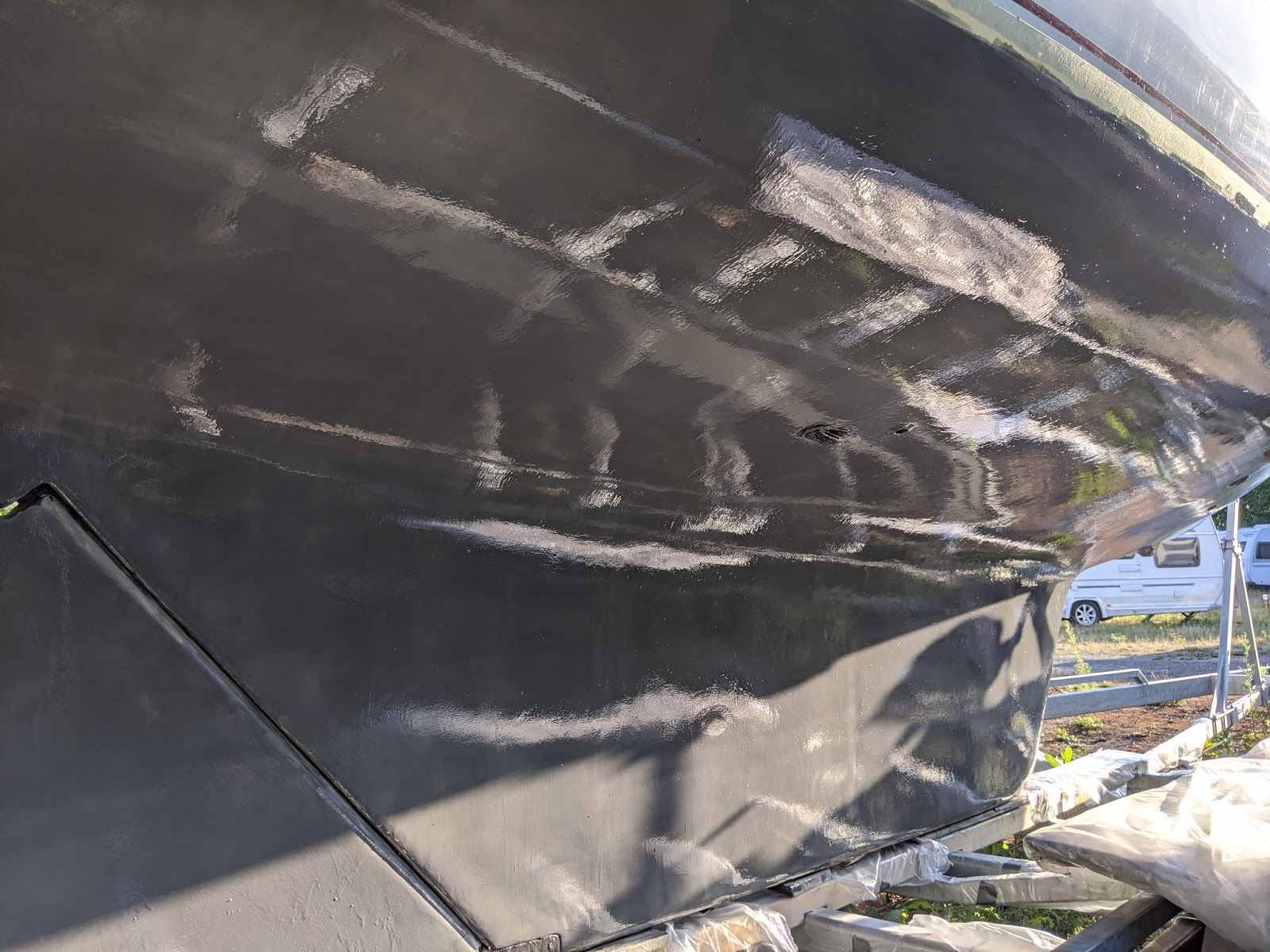The process of scraping took almost 3 mornings, and I've managed to do it with a single blade.
Update April 5th, 2020
Oh, if I'd only knew the amount of sanding it'll take to remove the last layer(s) of paint...
I started sanding - using an orbital sander from Bosch with 80grit sandpaper.
Each of the pictures above shows the progress after an average of 3-5hrs of work:

Oh, the pain and trouble!!! Flying disks, sometimes after 30 seconds of sanding, strange working positions, and the work to free up the hull of old paint, centimeter after centimeter.... and I'm still not done with the first half of the hull!
But there are some lessons learned from the process. Up until now, the best way I've found is to grind the upper layers of paint with sandpaper grit 40 and then remove the rest with either sandpaper grit 80 or the following abrasive disks:
But there are some lessons learned from the process. Up until now, the best way I've found is to grind the upper layers of paint with sandpaper grit 40 and then remove the rest with either sandpaper grit 80 or the following abrasive disks:


A proper clean-up of the Bosch sanding plate (vacuuming + brushing) after each 3-5hrs session helps lots with the adhesiveness of the disks to the plate. Sometimes the disks fly from the plate after 30 seconds of sanding, sometimes I can sand almost 1hr with them.
Respirator
For the sanding work, I'm using a 3M 7503 respirator with a 6055/A2 cartridge and P3R/5935 particle filter.
Update June 12th, 2020
Finally, the hull is down to the bare gelcoat, after 100+ sanding disks, around 8 sanding platters (Bosch and KWB) and countless (more than 100, I guess) hrs of oh glorious sanding:
The colorful spot on the port side is the old log that I've taken out , epoxied the hole with fiberglass and faired the whole area with west systems 407 filler:
Not only that, but today (at 28C!) We also applied the epoxy barrier coat to the whole hull! We were 2ppl, started at 12 and we finished the 6th and last coat at 8pm. We used West Systems 105 + the slow hardener 206 and the barrier coat 422. It was a steep learning curve, cause we had no idea how fast the epoxy will cure at this temperature (1C above the recommended range by West Systems), how long it'll take us to finish half the hull (so didn't know if we should attack only half the hull in one day, or do both sides). We slowly and painfully discovered that when it's hot, one should mix only a minimal batch, otherwise the bottom of the pot would be chunky and hard to spread. We also learned that the West System foam rollers are very good in general, but distort in all ways when the weather is hot (or maybe we just applied too much pressure or ...). We were able to apply 4,5 coats of epoxy paint with a B-size pack of epoxy and the 422 is well full, even after 6 coats. We didn't get any pinholes like many others, but we did get a lot of flies on the sticky epoxy, so it was a constant fight to pick them out. Anyways, here are some pictures of the mirror finish:
Next day, the mirror effect is mostly gone, but the color is even more consistent than yesterday:
Today I've redone the waterline, unfortunately the Epifanes "dark blue" is more black than blue. Maybe it'll become lighter when it dries.
This weekend I've washed the barrier coat with ScotchBrite (in case of any amine blush) and clear water, sanded it lightly with grit 80, washed the sand dust down again, rubbed the whole hull with acetone and the painted it with Epifanes Interimcoat. I got 3 cans of Interimcoat a 750ml which, according to the manual, should cover around 6m2 each. I was able to cover each side of the hull with one can each, and the last can was used to go over the waterline, rudder and a couple areas again. Whole process took around 4hrs for painting, working alone.
Sanded barrier coat:
The Epifanes Interimcoat is epoxy based and acts as a primer connecting the epoxy barrier coat with the Antifouling layers.







































